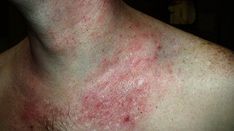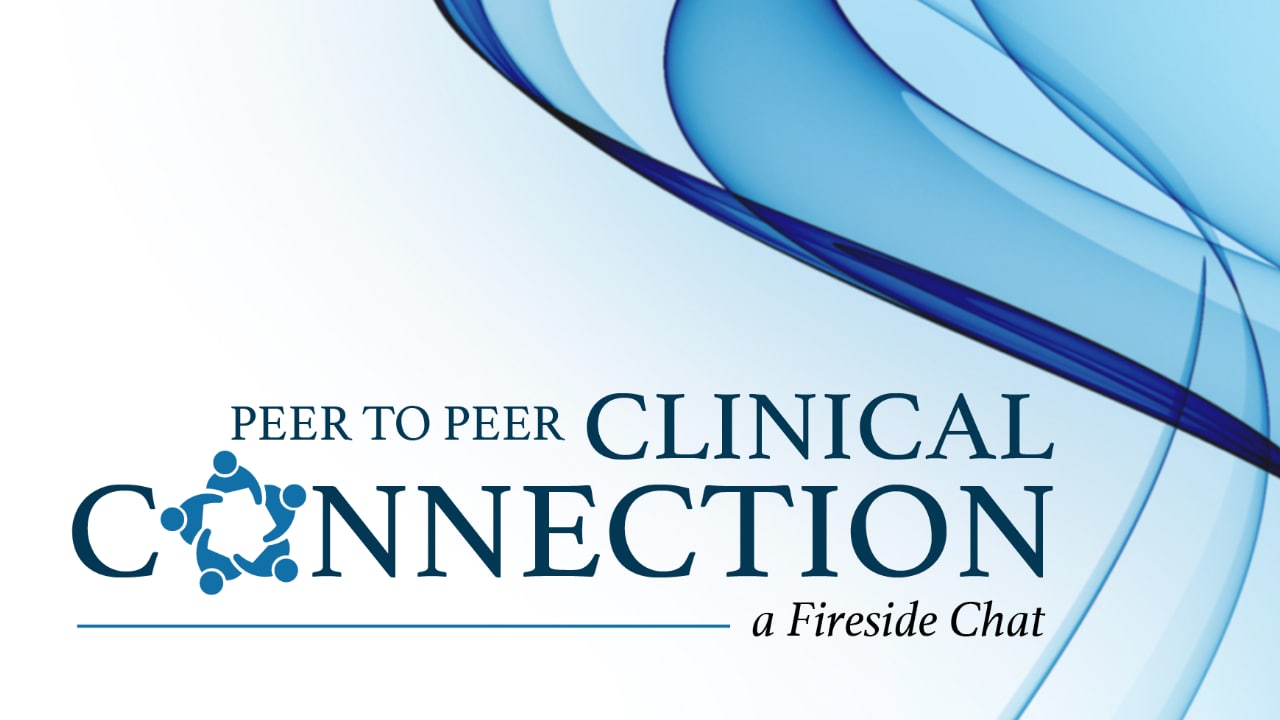Background
Gianotti-Crosti syndrome (GCS) is a distinct infectious exanthem with associated lymphadenopathy and acute anicteric hepatitis. [1, 2, 3] Gianotti and Crosti initially described GCS as associated with a hepatitis B virus exanthem, which they termed papular acrodermatitis of childhood. A similar constellation of characteristics was later found to be associated with several infectious agents and immunizations that were called papulovesicular acrolocated syndromes. Subsequent retrospective studies have shown that these 2 entities are indistinguishable from one another, and they are now consolidated under the unifying title of GCS. [4]
Also see Dermatologic Manifestations of Gianotti-Crosti Syndrome.
Pathophysiology
The most likely explanation for the exanthem is a local type IV hypersensitivity reaction to the offending viral or bacterial antigen within the dermis. This is based on the immunohistochemical characterization of the cutaneous inflammatory infiltrate. Findings on direct immunofluorescence examination of the skin are always negative. Electron microscopy has never revealed virus particles that suggested a reactive process other than an autoimmune phenomenon or direct infection of the skin. Inciting factors include various viral and bacterial infections, as well as recent immunizations. The rarity of Gianotti-Crosti syndrome (GCS) in adults suggests lifelong immunity to a common viral triggering agent. GCS is more common among children with atopic dermatitis, suggesting an immune mechanism. Increased human beta-defensin-4 (hBD-4) activity in the epidermis has been reported, indicating viral antigenemia rather than a type IV hypersensitivity reaction, as a possible cause of GCS in some viral cases. [5] However, more information is needed in order to define the precise mechanism involved. No genetic or familial predisposition is apparent. [6] An association with oral polio vaccination has been reported. [7]
Etiology of Gianotti-Crosti Syndrome
Associated viral infections are as follows:
-
Hepatitis A, B, and C
-
Rotavirus
-
Coxsackieviruses A16, B4, and B5
-
Adenovirus
-
Enterovirus
-
Parainfluenza virus type 1 and type 2 [10]
-
Parvovirus B19
-
Paravaccinia (milker's nodules)
-
Human herpesvirus 6
Associated bacterial infections are as follows:
-
Mycobacterium avium-intracellulare
-
Bartonella henselae
-
Borrelia burgdorferi
-
Meningococcemia
Associated immunizations are as follows:
-
Polio [7]
-
Diphtheria [11]
-
Smallpox
-
Hepatitis B
-
H1N1 [12]
Epidemiology
Frequency
United States
Because of the benign self-limited nature of Gianotti-Crosti syndrome (GCS), most cases are not reported, and the overall incidence is unknown. Frequency probably parallels the incidence of a precipitating infection in a specific geographic region.
International
The underlying infection correlates with the endemic pathogens of a specific geographic region.
For example, in Japan and Mediterranean countries, GCS is more commonly associated with hepatitis B virus infection. With the advent of more universal hepatitis B immunization, Epstein-Barr virus is now the most common etiologic factor worldwide. [13, 14]
Race
No racial predilection has been noted; however, the underlying infection correlates with the endemic pathogens of a specific geographic region.
Sex
In the pediatric population, GCS affects males and females with equal frequency. However, affected adults have been almost exclusively female, with only 3 documented cases affecting men. [15] Thus, hormonal influences may play a role in GCS. [10]
Age
GCS primarily occurs in children aged 3 months to 15 years, with a peak in children aged 1-6 years. More than 90% of patients are younger than 4 years, with a mean age of diagnosis of 15 months to 2 years. [15]
Prognosis
Prognosis is excellent. Lesions clear within 4-12 weeks. No long-term complications are associated with Gianotti-Crosti syndrome (GCS). The mere presence of a rash does elicit some degree of social morbidity, depending on the age of the affected child. Although typically nonpruritic, some reports document pruritus in the later stages of the rash. The only significant morbidity involves the underlying infectious process, particularly the hepatitis B virus.
-
Multiple erythematous flat-topped papules on the cheeks of an 18-month-old boy with Gianotti-Crosti syndrome.
-
Arm of a 3-year-old boy with Gianotti-Crosti syndrome demonstrating well-defined erythematous lichenoid papules on the arm and forearm.
-
Thigh of the 3-year-old boy with Gianotti-Crosti syndrome.










